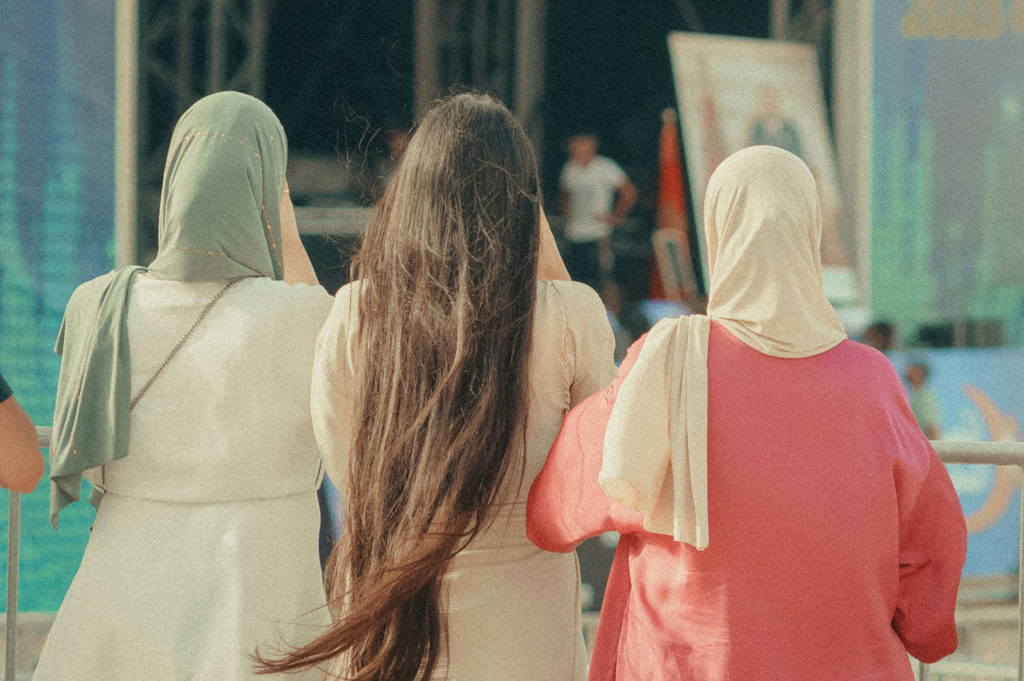The European Court of Human Rights (the Court) recently issued its ruling in Mikyas v. Belgium (Mikyas), upholding the ban on visible religious symbols, including headscarves (hijab), in Dutch-language educational institutions run directly by the Flemish authorities. The Court accepted Belgium’s justifications of neutrality, equal opportunities, and preventing segregation. This decision aligns with the Court’s previous jurisprudence (see here and here), which has consistently found that such bans do not violate Article 9 of the European Convention on Human Rights (the Convention), citing the protection of public order and the rights of others as legitimate aims. In this contribution, I contend that this ruling represents a missed opportunity for the Court to approach the issue through Crenshaw’s intersectionality theory. By failing to incorporate a gender-sensitive and intersectional perspective, the Court has overlooked crucial aspects of the case that could have led to a more nuanced and comprehensive analysis.
In Mikyas, the Court held that the prohibition was part of the schools’ regulations, rooted in domestic law, and aimed at ensuring neutrality in education, which the national authorities viewed as essential to protect the rights of others and maintain public order. The Court emphasised that states enjoy a wide margin of appreciation in matters of religion and education, particularly where religious diversity exists. (¶57, 59) The prohibition was found to serve the legitimate aims of preventing social pressure and protecting equality among students, ensuring that religious symbols do not disrupt the school environment. (¶61) The Court concluded that the contested prohibition was proportionate and necessary in a democratic society. (¶75) The national authorities were entitled to create a neutral school environment free from religious symbols to promote pluralism and protect the rights and freedoms of all students. Therefore, the complaints under Article 9 were deemed manifestly ill-founded and were rejected.
Earlier, in SAS v. France, (2014), the Court acknowledged that a related ban (on covering one’s face in public) interferes with the rights to privacy and religious expression (¶106-109, SAS), but found it could be justified under the concept of “living together” as part of protecting others’ rights and freedoms (¶141-142, SAS). While recognising the ban’s significant negative impact on Muslim women who wear the veil for religious reasons (¶146, SAS), the Court emphasised France’s wide margin of appreciation due to the lack of European consensus on this issue (¶155-156, SAS). Similarly, the Court followed the same reasoning in Leyla Şahin v. Turkey, (2004); Dogru v. France, (2008); Kervanci v. France, (2008); and Aktas v. France, (2009) wherein the Court upheld the prohibition on the hijab in educational institutions and employment places on the contention that the prohibition was justified and proportionate, falling within State’s margin of appreciation in balancing religious freedom with secularism. The Court rejected claims of discrimination, stating that the law applied to all conspicuous religious symbols. The Court has established that the interference via prohibition with the applicant’s religious freedom was justified and proportionate to the aims of protecting others’ rights and public order.
Intersectionality, a concept introduced by legal scholar Kimberlé Crenshaw, recognises that individuals can face multiple, intersecting forms of discrimination simultaneously. In a third-party intervention in Mikyas, the Human Rights Centre of Ghent University and Equality Law Clinic of the Free University of Brussels, invited the Court to adopt an intersectional approach while adjudicating the decision (¶52, Mikyas). Despite their contentions, the Court ignored to consider the intersectional approach in the headscarf ban case and adjudicated within a single-axis right framework i.e., within the prototype of ‘freedom of religion’ and not from the angle of an anti-discrimination law. The Court’s failure to apply an intersectional analysis has led to a flawed decision that fails to account for the unique challenges faced by Muslim women who wear headscarves.
By focusing primarily on religious freedom, the Court neglected to consider how the ban intersects with other forms of discrimination. Muslim women who wear headscarves face prejudice based not only on their religion but also their gender and ethnicity or race. As Bond argued in Global Intersectionality and Contemporary Human Rights, an intersectional approach would have revealed how these various forms of discrimination combine to create a unique and particularly challenging situation for these women. The Court’s decision does not acknowledge the compounded vulnerability experienced by Muslim women who wear headscarves. These individuals often face discrimination in multiple spheres of life, including education, employment, and public spaces. The ban on headscarves as a visible religious symbol in educational institutions adds another layer to this existing discrimination and vulnerability, potentially exacerbating their marginalisation in society.
While the ban on headscarves appears neutral on its face, it disproportionately affects Muslim women who wear headscarves. The Court’s failure to consider this gendered aspect of the ban through an intersectional lens overlooks how gender and religious expression intersect in this particular context. This oversight results in a decision that fails to address the specific challenges faced by Muslim women. An intersectional analysis in International Human Rights Law would have highlighted how the ban affects the complex identities of Muslim women who wear headscarves. For many, the headscarf is not merely a religious symbol but an integral part of their identity that intersects with their gender, culture, and personal autonomy. The Court’s decision, by not considering these intersecting factors, fails to fully grasp the profound impact of the ban on these women’s sense of self and agency. As Truscan and Bourke-Martignoni contended intersectionality also considers how various forms of discrimination interact with socioeconomic factors. The Court’s analysis does not address how the ban might disproportionately affect Muslim women from lower socioeconomic backgrounds, who may have fewer educational and employment alternatives if they choose to continue wearing the headscarf.
The Court’s failure to apply an intersectional analysis in Mikyas carries far-reaching consequences. By overlooking the complex interplay of various forms of discrimination, the Court has delivered incomplete protection of human rights, potentially leaving some of society’s most vulnerable members (i.e., Muslim women students) without adequate safeguards. This oversight may inadvertently perpetuate systemic inequalities and existing power structures that disproportionately affect Muslim women. Moreover, the Court has missed a crucial opportunity to advance its jurisprudence by incorporating intersectional analysis into its decision-making process, a step that could have set a precedent for more nuanced and comprehensive human rights protection. Perhaps most concerningly, the ruling risks exacerbating the marginalisation of Muslim women who wear headscarves, potentially restricting their access to education and, by extension, limiting their social and economic opportunities. This decision thus represents not just a legal misstep, but a potential setback in the broader struggle for equality and inclusion in European society.
The Court’s rationale underscores the urgent need for a more nuanced approach to human rights law, one that can adequately address the multifaceted nature of discrimination in contemporary European society. The Court’s approach reflects a broader trend of prioritising a narrow conception of state neutrality over the protection of religious expression and educational access. This not only raises questions about the Court’s understanding of lived religious experiences but also its commitment to substantive equality. As Europe continues to grapple with issues of religious expression, cultural diversity, and equality, human rights bodies like the European Court of Human Rights must evolve their approach to address these complex intersections.
To address the shortcomings of the Mikyas ruling, future cases involving religious symbol bans should adopt a more comprehensive approach that embraces intersectionality. The Court must explicitly incorporate intersectional analysis, recognising and examining how multiple forms of discrimination intersect and compound each other. This approach should be grounded in the lived experiences of affected individuals, incorporating evidence and testimonies that highlight the intersectional nature of their challenges. In addition to recognising these intersections as Bórquez argued, the Court should assess the cumulative impact of various forms of discrimination, evaluating how they combine to create unique barriers and challenges for affected groups. This assessment should be informed by diverse perspectives, including consultations with experts in intersectionality and consideration of amicus briefs from organisations representing affected communities. Through these efforts, courts can work towards developing robust intersectional jurisprudence, actively building a body of case law that recognises and addresses the complex realities of intersectional discrimination.


